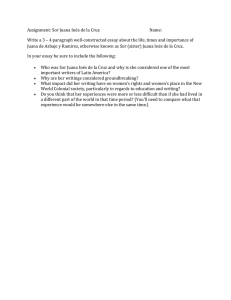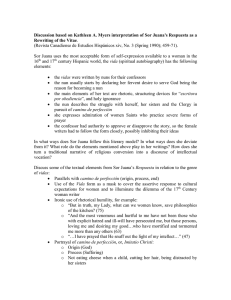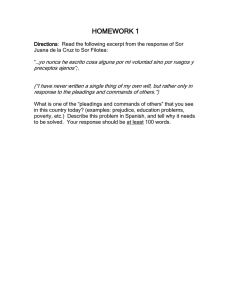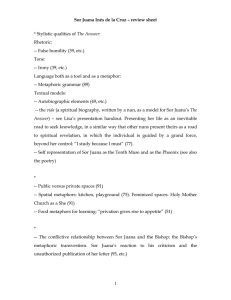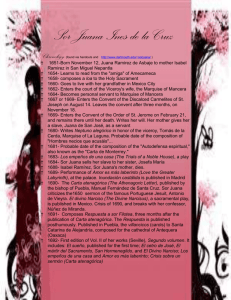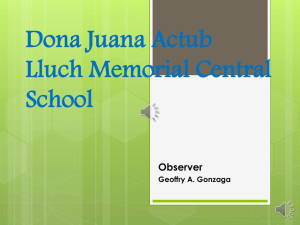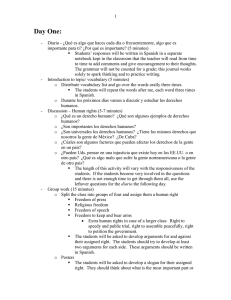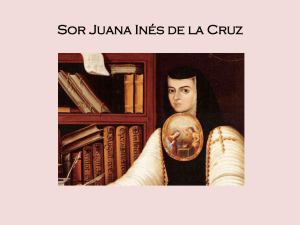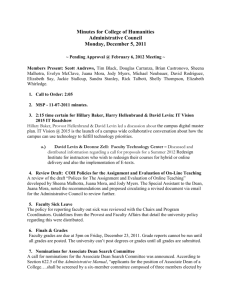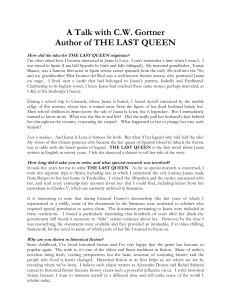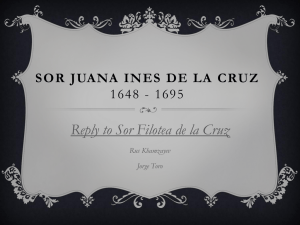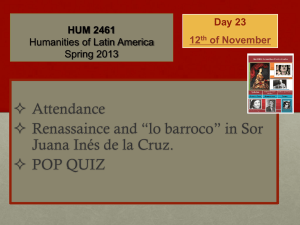Review: Early Modern Women's Writing and Sor Juana Inés de la Cruz
advertisement
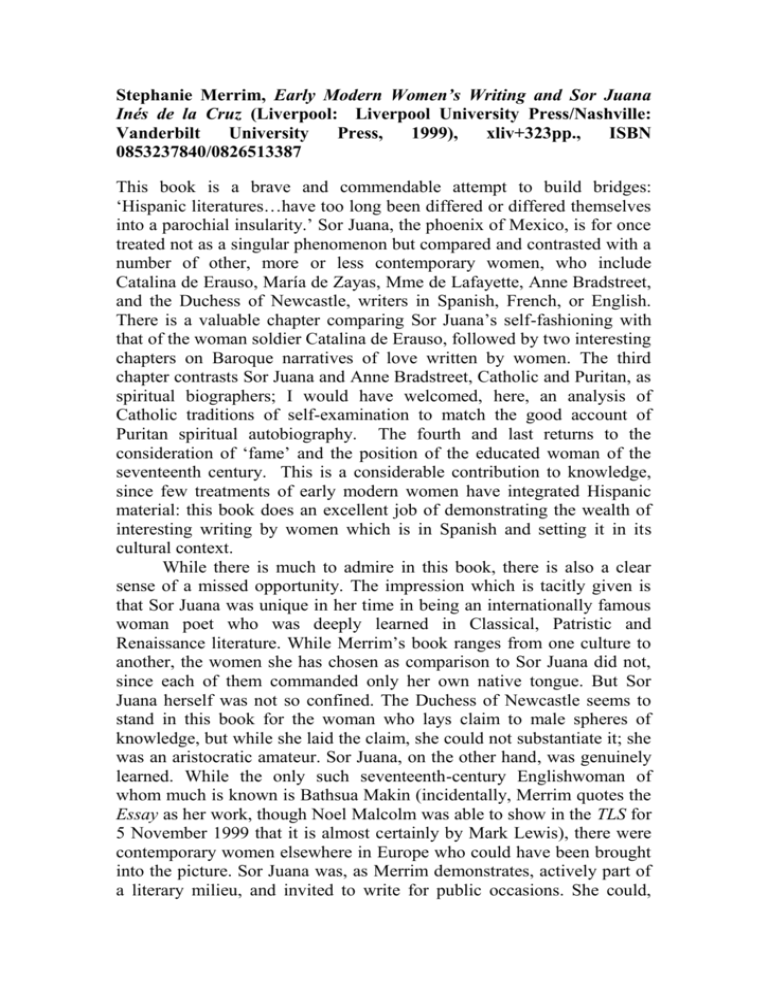
Stephanie Merrim, Early Modern Women’s Writing and Sor Juana Inés de la Cruz (Liverpool: Liverpool University Press/Nashville: Vanderbilt University Press, 1999), xliv+323pp., ISBN 0853237840/0826513387 This book is a brave and commendable attempt to build bridges: ‘Hispanic literatures…have too long been differed or differed themselves into a parochial insularity.’ Sor Juana, the phoenix of Mexico, is for once treated not as a singular phenomenon but compared and contrasted with a number of other, more or less contemporary women, who include Catalina de Erauso, María de Zayas, Mme de Lafayette, Anne Bradstreet, and the Duchess of Newcastle, writers in Spanish, French, or English. There is a valuable chapter comparing Sor Juana’s self-fashioning with that of the woman soldier Catalina de Erauso, followed by two interesting chapters on Baroque narratives of love written by women. The third chapter contrasts Sor Juana and Anne Bradstreet, Catholic and Puritan, as spiritual biographers; I would have welcomed, here, an analysis of Catholic traditions of self-examination to match the good account of Puritan spiritual autobiography. The fourth and last returns to the consideration of ‘fame’ and the position of the educated woman of the seventeenth century. This is a considerable contribution to knowledge, since few treatments of early modern women have integrated Hispanic material: this book does an excellent job of demonstrating the wealth of interesting writing by women which is in Spanish and setting it in its cultural context. While there is much to admire in this book, there is also a clear sense of a missed opportunity. The impression which is tacitly given is that Sor Juana was unique in her time in being an internationally famous woman poet who was deeply learned in Classical, Patristic and Renaissance literature. While Merrim’s book ranges from one culture to another, the women she has chosen as comparison to Sor Juana did not, since each of them commanded only her own native tongue. But Sor Juana herself was not so confined. The Duchess of Newcastle seems to stand in this book for the woman who lays claim to male spheres of knowledge, but while she laid the claim, she could not substantiate it; she was an aristocratic amateur. Sor Juana, on the other hand, was genuinely learned. While the only such seventeenth-century Englishwoman of whom much is known is Bathsua Makin (incidentally, Merrim quotes the Essay as her work, though Noel Malcolm was able to show in the TLS for 5 November 1999 that it is almost certainly by Mark Lewis), there were contemporary women elsewhere in Europe who could have been brought into the picture. Sor Juana was, as Merrim demonstrates, actively part of a literary milieu, and invited to write for public occasions. She could, therefore, have been advantageously compared with contemporary women of whom this is also true. Anna Maria van Schurman (1607– 1678), whose The Learned Maid is discussed on pp. 199–200, was famous both within and beyond the Netherlands, and her position within Netherlandic culture could be compared with that of Sor Juana in useful ways; it is curious that Merrim does not do so, since van Schurman, like Sor Juana, enjoyed international celebrity; they performed as women scholars, and their work was held up to admiration both within and beyond their immediate context. Van Schurman is in a more serious sense Sor Juana’s peer than the massively eccentric Duchess. Jane Stevenson University of Aberdeen
